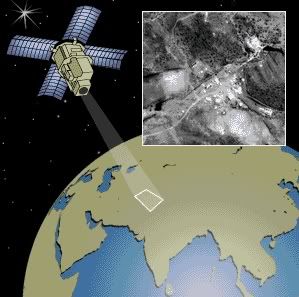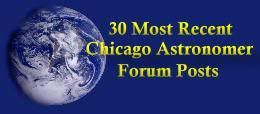Post by Chicago Astronomer - Astro Joe on Feb 6, 2006 12:43:29 GMT -6
I Spy

Amateur satellite spotters can track everything government spymasters blast into orbit. Except the stealth bird codenamed Misty
----
Sometime around dawn on the first day of the 1991 Gulf War, Ted Molczan was woken by a mysterious phone call. Molczan had been up until 3:30 am in his Toronto apartment, riveted by the televised images of Tomahawk missiles raining down on Baghdad, so he was groggy when the phone rang. A male voice with a thick accent said: "I know you're involved in satellite tracking. I'm interested in doing a trade." The caller offered Molczan information on the orbiting patterns of a constellation of eight US satellites. In exchange, he wanted to know the orbits for the CIA's KH-11 "Keyhole" satellites - from space they can discern an object as small as a softball, and they were sending US forces hi-res digital imagery of Iraq and Kuwait.
Molczan, an energy conservation consultant, was just becoming known for his skill at a most unusual hobby. In his spare time, he likes to take binoculars and a stopwatch onto the balcony of his high-rise apartment and track clandestine US spy satellites. There are thousands of amateur satellite observers active today, but Molczan is a leader of an informal group of 20 or so who specialize in so-called black satellites, the orbits of which are not disclosed, and the existence of which is often classified. Molczan and his band of associates monitor some 140 classified US satellites, like the Lacrosse radar imaging satellites, which can see through cloud cover and darkness and produce photo-quality images of targets on Earth.
The observers, who congregate on a Web site called Heavens-Above and a mailing list called SeeSat-L, have amassed an impressive collection of information and expertise. For two decades, they have played a high tech game of hide-and-seek with the US's National Reconnaissance Office, a secretive satellite agency. By coordinating their efforts, amateur observers in Europe, North America, and South Africa monitor satellites at different phases of their journeys and extrapolate the precise dimensions of their orbits. Astonishingly, despite the hobbyists' modest resources - most observe part-time from their balconies and backyards with equipment available at RadioShack - they are good enough to spot almost anything the NRO, with its estimated $7 billion budget, blasts into space. That, of course, is why the mystery caller wanted to chat.
Molczan told the man that he didn't have current information on KH-11s because most of his fellow satellite spotters were based in the Northern Hemisphere and Keyholes were "out of season" in winter, obscured by Earth's shadow. "I asked, 'Well, who are you?'" Molczan remembers. "He sort of laughed and said, 'Let's just say I'm south of you.'"
The conversation lasted barely three minutes, but Molczan says it still haunts him. It made him begin to think about what would happen if the information collected by those "in the hobby" ever ended up in the wrong hands.
Full facinating story here: www.wired.com/wired/archive/14.02/spy.html
=========






